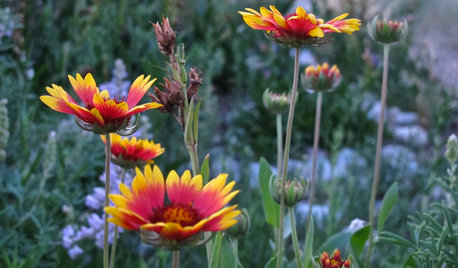Pollination of Pineapple Guava, please help
murkwell
18 years ago
Related Stories

SUMMER GARDENINGHouzz Call: Please Show Us Your Summer Garden!
Share pictures of your home and yard this summer — we’d love to feature them in an upcoming story
Full Story
EDIBLE GARDENSGarden BFFs? Why Your Vegetables Are Begging for Companion Plants
Foster friendships among plants for protection from pests, pollination support and color camaraderie
Full Story
GARDENING GUIDESAttract Hummingbirds and Bees With These Beautiful Summer Flowers
Roll out a welcome mat for pollinators to keep your landscape in balance and thriving
Full Story
GARDENING GUIDESThese Hummingbird-Attracting Native Plants May Surprise You
These flowers, vines and shrubs offer shelter and food supplies that keep hummingbirds around longer
Full Story
GARDENING GUIDESGreat Design Plant: Cephalanthus Occidentalis
Buttonbush is an adaptable woody shrub with delightful pincushion flowers
Full Story
FARM YOUR YARD6 Things to Know Before You Start Growing Your Own Food
It takes time and practice, but growing edibles in the suburbs or city is possible with smart prep and patience
Full Story
LANDSCAPE DESIGNThe 7 Best Plant Types for Creating Privacy and How to Use Them
Follow these tips for using different kinds of plants as living privacy screens
Full Story
GARDENING GUIDESHouzz Call: What’s Your Favorite Backyard Beauty?
The simple, honest daisy is this writer’s go-to garden flower. We want to hear which plant, flowering or otherwise, gives you special joy
Full Story
MOST POPULARHow to Start a Cool-Season Vegetable Garden
Late summer and late winter are good times to plan and plant cool-season crops like salad greens, spinach, beets, carrots and peas
Full Story
GARDENING AND LANDSCAPINGWorld of Design: 10 Home Gardeners Show Us Their Sweet Summer Harvests
From New York to Tokyo, these gardeners have turned their yards, terraces and rooftops into places of bounty
Full Story



murkwellOriginal Author
cncm_blitz
Related Discussions
Pineapple guava aka feijoa
Q
Pineapple Guava
Q
Pineapple guava in California
Q
Are all Pineapple Guavas self-pollinating?
Q
larry_gene
cncm_blitz
Ralph Whisnant
ashok_ncal
larry_gene
murkwellOriginal Author
cncm_blitz
murkwellOriginal Author
cncm_blitz
murkwellOriginal Author
cncm_blitz
murkwellOriginal Author
mrtexas
murkwellOriginal Author
cncm_blitz
Ralph Whisnant
tcjotm
larry_gene
murkwellOriginal Author
tcjotm
cncm_blitz
murkwellOriginal Author
larry_gene
cncm_blitz
murkwellOriginal Author
larry_gene
murkwellOriginal Author
cncm_blitz
cncm_blitz
larry_gene
ashok_ncal
cncm_blitz
murkwellOriginal Author
larry_gene
altadenamara
murkwellOriginal Author
larry_gene
altadenamara
larry_gene
amber_2008
larry_gene
maricybele
murkwellOriginal Author
martin-2008
murkwellOriginal Author
larry_gene
Nelson E.
Nelson E.